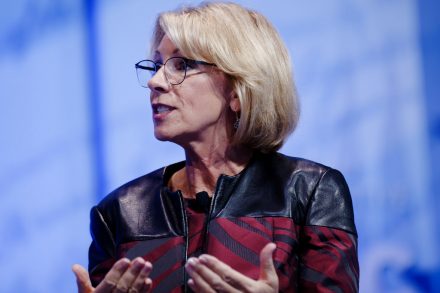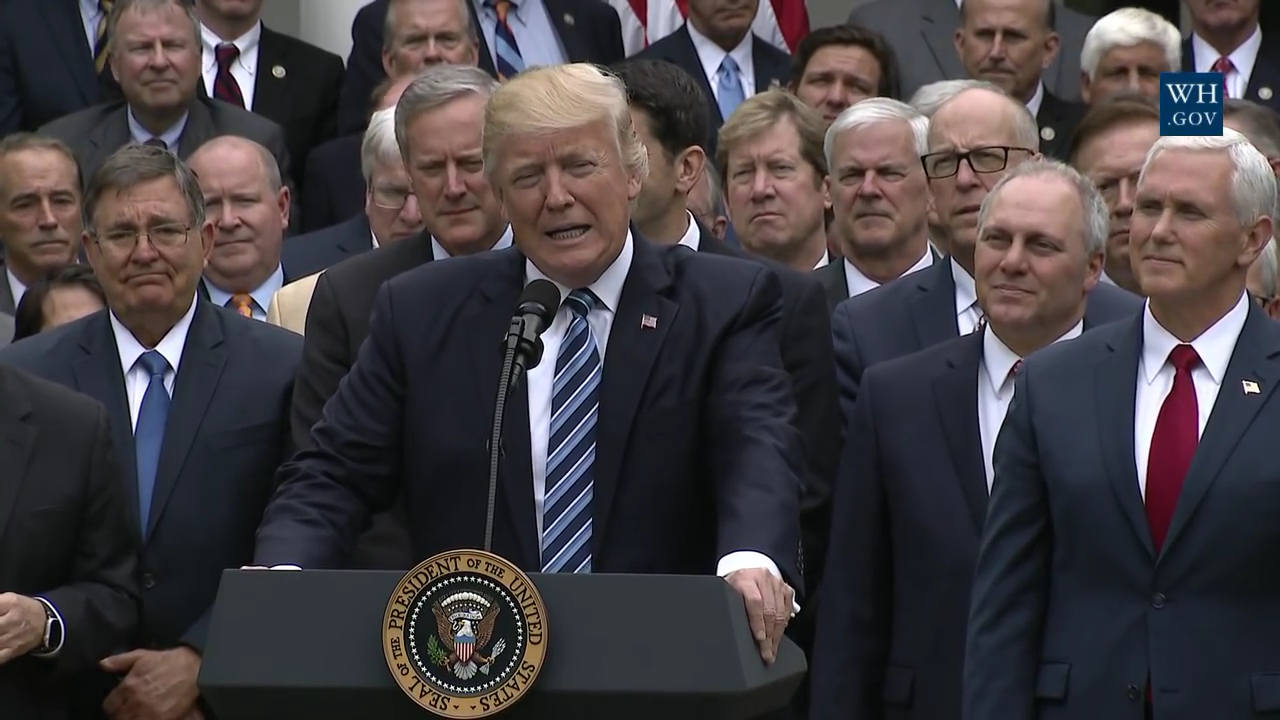Abortion rights, women of color, and LGBTQI+ people are under attack. Pledge to join us in fighting for gender justice.
Trump and DeVos’ Budget Takes Aim at the Most Vulnerable Students


Late Wednesday afternoon, the Washington Post broke a story revealing leaked details about the education portion of the Trump Administration’s upcoming budget proposal. The budget clearly represents the ideological priorities Trump himself as well as his chosen Secretary of Education Betsy DeVos, who has spent decades of her life funding efforts to end public education as we know it. Yet while DeVos has frequently disparaged the federal role in education, these cuts attack many of the most useful and important functions the U.S. Department of Education (USED) serves.
For starters, the Trump Administration’s budget proposal would cut staffing at USED’s Office for Civil Rights, right as they’re experiencing an increase in discrimination complaints. One of the key reasons we even have a federal Department of Education is to serve as a check on the power of state and local school districts, who have a long history of discriminating against students of color, students living in poverty, students with disabilities, girls, and LGBTQ youth.
Equally galling — particularly for anyone who was outraged by the findings in our recent Let Her Learn reports — are the numerous proposals to reduce or eliminate already-underfunded programs that can help prevent or address the trauma that keeps too many girls from succeeding in school. For instance, the Administration wants to zero out funds that help school districts pay for anti-bullying initiatives, which could help prevent peer-to-peer harassment, and mental health services, which are desperately needed to help students cope with trauma. They also want to eliminate funding for after-school programs, many of which serve low-income students who may not otherwise have safe, supervised places to go once the school day ends.
This budget would also eliminate funding for Advanced Placement courses and STEM programs, further exacerbating existing disparities in learning opportunities between wealthier, whiter school districts and school districts serving girls of color from lower-income families. Speaking of disparities, the Administration’s proposed education cuts would also make it even harder for struggling school districts to retain highly-qualified teachers, by ending the student loan forgiveness program for public servants. Many of the people currently eligible for student loan forgiveness are teachers who agree to teach for at least five years in hard-to-staff schools and/or hard-to-fill positions for at least five years.
All of these cuts and more would be made in order to finance dramatic increases in the amount of public money directed to privately-run schools. Despite evidence that charters don’t consistently make a difference in student outcomes, and despite the Department’s own research finding that voucher programs may actually lower student achievement, the Trump Administration wants to divert funds intended to support public schools serving low-income students into these programs instead. That would be bad enough for low-income students in urban areas, whose families might end up struggling to navigate the confusing and onerous choice process in their cities, or being left behind in increasingly underfunded public schools. It would be even worse for low-income students in rural areas, whose communities are often too small and spread out to host an array of school options.
Fortunately, the Trump Administration’s budget proposals are suggestions for spending decisions, not a decree. We can still hope — and organize — to prevent Congress from making these suggestions into reality.





